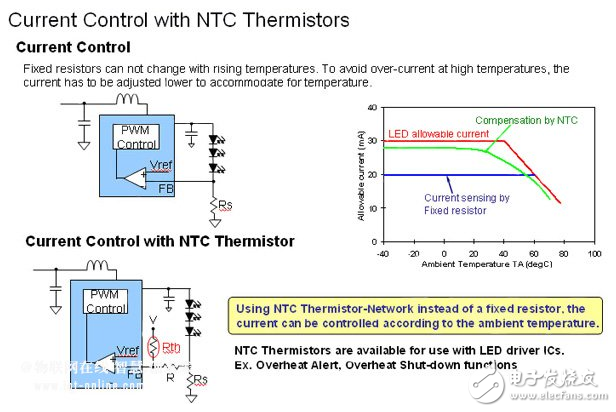
资料下载

NTC热敏电阻在HBLED照明方案中的应用
High-brightness, high-power LEDs (HBLEDs), like any other semiconductor device, generate heat. Since it is well known that high temperatures can significantly shorten an HBLED‘s lifetime as well as negatively impact brightness, temperature control is required. However, in order to control the temperature, a designer first needs to determine how to monitor the temperature of the LED die, and that is precisely the role of a negative temperature coefficient (NTC) thermistor in an LED lighting system.
Different temperature sensing devices, including diodes, on-chip sensors, positive temperature coefficient (PTC) thermistors, and resistance temperature detectors (RTDs), can be used in LED lighting applications to protect the HBLED from overheating. However, NTC thermistors are often the preferred choice for temperature sensing and control in many of these applications, primarily because of their small package sizes and attractive price/performance ratios.

声明:本文内容及配图由入驻作者撰写或者入驻合作网站授权转载。文章观点仅代表作者本人,不代表电子发烧友网立场。文章及其配图仅供工程师学习之用,如有内容侵权或者其他违规问题,请联系本站处理。 举报投诉
- 相关下载
- 相关文章






